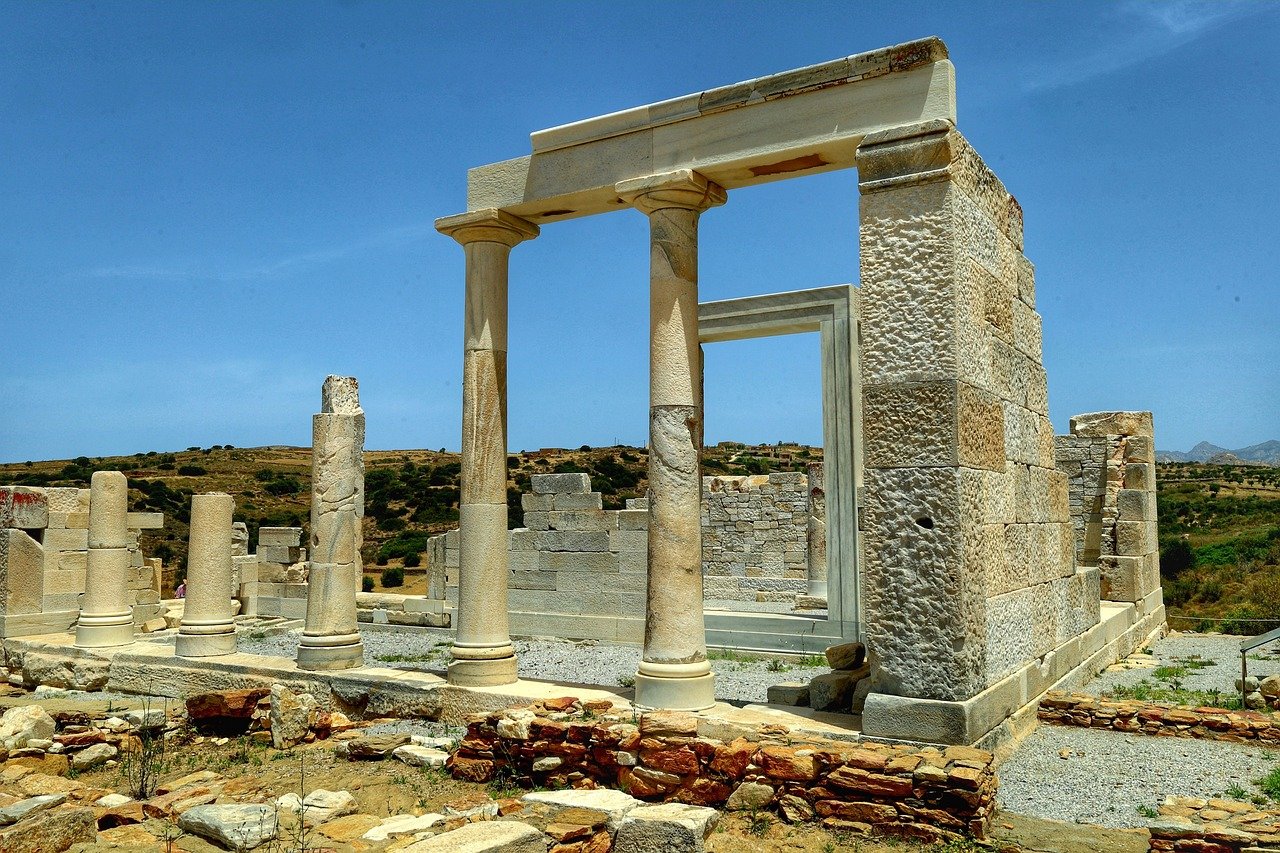The Cultural Significance of Architectural Styles
Architecture is not just about buildings and structures; it is a reflection of the values, traditions, and identities of a society. Architectural styles have played a crucial role in shaping cultures and societies throughout history. From the grandeur of ancient civilizations to the sleek lines of modernist designs, each architectural style tells a unique story about the people who created it.
Ancient architectural styles, such as those of the Egyptians, Greeks, and Romans, are a testament to the power and sophistication of these civilizations. The monumental pyramids of Egypt, the intricate columns of Greece, and the grand arches of Rome all speak to the cultural values and achievements of these ancient peoples.
Medieval architectural styles like Gothic, Romanesque, and Islamic architecture are imbued with spiritual and symbolic meanings. The towering cathedrals of the Gothic period, the sturdy fortresses of the Romanesque era, and the intricate geometric patterns of Islamic design all reflect the religious and cultural contexts of the time.
The Renaissance and Baroque architectural styles mark a period of rebirth and grandeur in Europe. The revival of classical influences in Renaissance architecture and the ornate, theatrical designs of the Baroque era mirror the cultural shifts and artistic flourishing of the time.
Colonial architectural styles bear the imprint of colonial powers that imposed their architectural preferences on conquered territories. This blending of styles led to the creation of hybrid architectural forms that reflect the fusion of cultures and the impact of colonization on local traditions.
Modernist architecture, with its emphasis on simplicity and functionality, represents a departure from historical styles. The clean lines and open spaces of modernist buildings reflect a shift in cultural values towards efficiency, minimalism, and the embrace of new technologies.
Postmodern architecture challenges traditional norms with its eclectic and playful designs. Postmodern architects draw inspiration from a wide range of sources, creating buildings that celebrate cultural diversity, individual expression, and the blurring of boundaries between art and architecture.
Contemporary architectural styles in the modern world reflect the influences of globalization, sustainability, and the fusion of diverse cultural traditions. Architects today draw inspiration from around the globe, creating buildings that are both innovative and responsive to the environmental and social challenges of our time.
Looking to the future, architectural styles are poised to evolve in response to changing cultural, social, and technological landscapes. The buildings of tomorrow may incorporate cutting-edge materials, sustainable design principles, and innovative technologies, shaping the way we live and interact with our built environment.

Ancient Architectural Styles
Exploring how architectural styles reflect and shape cultural identities, traditions, and values across different societies and time periods.
When delving into the architectural styles of ancient civilizations, such as the Egyptians, Greeks, and Romans, we uncover a treasure trove of cultural symbolism and influences. The grandeur of the Egyptian pyramids, the symmetry and harmony of Greek temples, and the engineering marvels of Roman aqueducts all speak volumes about the values and beliefs of these ancient societies.
Each column, arch, and frieze was not merely a structural element but a statement of cultural pride and achievement. The meticulous carvings, intricate patterns, and monumental scale of these structures reflected the reverence for gods, the celebration of heroes, and the pursuit of eternal glory.
These architectural styles were not just about building shelters; they were about immortalizing stories, preserving legacies, and embodying the essence of civilizations that believed in leaving a lasting mark on history.

Medieval Architectural Styles
Medieval architectural styles encompass a rich tapestry of design elements that reflect the religious, social, and political contexts of the Middle Ages. The Gothic style, characterized by soaring spires, pointed arches, and intricate stained glass windows, emerged as a symbol of spiritual aspiration and divine light. In contrast, the Romanesque style emphasized solidity and massiveness, with thick walls and rounded arches conveying a sense of strength and stability.
Islamic architecture during the medieval period showcased intricate geometric patterns, ornate calligraphy, and serene courtyards, embodying the values of unity, harmony, and contemplation. These architectural styles were not just structures but expressions of cultural identity and spiritual beliefs, shaping the way people interacted with their built environment.

Renaissance and Baroque Architectural Styles
Exploring how architectural styles reflect and shape cultural identities, traditions, and values across different societies and time periods.
The Renaissance period marked a significant shift in architectural styles, with a revival of classical elements and a focus on symmetry and proportion. Buildings from this era, such as the iconic St. Peter's Basilica in Vatican City, exemplify the grandeur and elegance of Renaissance architecture. The use of columns, domes, and arches created a sense of harmony and balance, reflecting the cultural emphasis on humanism and the pursuit of knowledge.
In contrast, the Baroque style emerged as a more extravagant and theatrical form of architecture, characterized by elaborate ornamentation, dramatic lighting effects, and dynamic shapes. Baroque buildings, like the Palace of Versailles in France, aimed to impress and awe viewers with their opulence and grandiosity. This style reflected the power and wealth of the ruling elite, as well as the religious fervor of the time.
One can think of the Renaissance as a refined gentleman in a tailored suit, exuding sophistication and intellect, while the Baroque style is like a flamboyant performer on a grand stage, captivating the audience with its ornate costumes and dramatic gestures. Both styles captured the spirit of their respective eras, showcasing the cultural values and aspirations of society.
Through the architectural language of the Renaissance and Baroque periods, we can glimpse into the past and understand the societal norms, artistic preferences, and philosophical beliefs that shaped these magnificent structures. The interplay of light and shadow, the intricate details, and the sense of movement in these buildings speak volumes about the cultural milieu of Europe during these transformative periods.

Colonial Architectural Styles
Exploring how architectural styles reflect and shape cultural identities, traditions, and values across different societies and time periods.
During the colonial era, powerful nations extended their influence to distant lands, leaving a lasting mark on the architectural landscape. Colonial architectural styles emerged as a fusion of indigenous traditions and the design principles of the colonizers. The imposing structures of colonial powers, such as the British, Spanish, and Portuguese, often featured grand facades, intricate detailing, and symmetrical layouts.
These architectural styles not only served as symbols of authority and control but also played a significant role in reshaping local aesthetics and urban planning. The blending of European architectural elements with local materials and construction techniques resulted in unique hybrid forms that reflected the complex cultural interactions of the time.
For example, in colonial Latin America, the Baroque architecture introduced by the Spanish conquistadors blended with indigenous influences to create the distinctive Mestizo Baroque style, characterized by ornate decorations and vibrant colors. Similarly, the British colonial architecture in India incorporated elements of Mughal design, giving rise to structures like the iconic Victoria Memorial in Kolkata.
Colonial architectural styles not only represented the dominance of colonial powers but also became enduring symbols of cultural exchange and adaptation. These structures continue to stand as a testament to the complex interplay of cultures and histories that have shaped our built environment.
Q: How did colonial architectural styles influence local cultures?
A: Colonial architectural styles influenced local cultures by introducing new design elements, construction techniques, and urban planning principles that blended with existing traditions, creating hybrid architectural forms.
Q: What are some examples of colonial architectural styles around the world?
A: Examples of colonial architectural styles include the Dutch colonial buildings in South Africa, the Spanish colonial architecture in Latin America, and the British colonial architecture in India.
Q: How do colonial architectural styles reflect the power dynamics of the colonial period?
A: Colonial architectural styles often reflected the authority and control of colonial powers through the grandeur and scale of their buildings, symbolizing dominance and influence over conquered territories.

Modernist Architectural Styles
Exploring how architectural styles reflect and shape cultural identities, traditions, and values across different societies and time periods.
Modernist architectural styles emerged in the early 20th century, emphasizing simplicity, functionality, and the use of new materials such as steel, glass, and concrete. This movement sought to break away from the ornate and decorative features of previous architectural styles, focusing instead on clean lines, geometric forms, and open spaces. The mantra "form follows function" became a guiding principle, with buildings designed to serve their purpose efficiently and elegantly.
The modernist movement, led by architects like Le Corbusier and Ludwig Mies van der Rohe, aimed to create structures that were a reflection of the industrial age, embracing technological advancements and rejecting historical ornamentation. These buildings often featured flat roofs, large windows, and an emphasis on horizontal planes, promoting a sense of openness and lightness.
Modernist architecture represented a radical departure from the past, signaling a shift in cultural values towards progress, innovation, and rationality. The style became synonymous with the aspirations of a modern society, where clean lines and functional design were seen as a reflection of a forward-thinking and efficient world.
Despite facing criticism for its stark aesthetics and perceived lack of warmth, modernist architecture left a lasting impact on the built environment, influencing urban planning, interior design, and even furniture. The movement's influence can be seen in iconic structures like the Bauhaus School in Germany and the Seagram Building in New York City, showcasing the enduring legacy of modernist design.
Q: How do architectural styles reflect cultural identities?
A: Architectural styles often incorporate elements that are unique to a particular culture, such as decorative motifs, building materials, and construction techniques. These elements can reflect the values, beliefs, and traditions of the society in which they originate, serving as a visual representation of cultural identity.
Q: Why is it important to study architectural styles?
A: Studying architectural styles allows us to understand the historical, social, and cultural contexts in which buildings were constructed. By analyzing architectural design, we can gain insights into the values, priorities, and aspirations of different societies throughout history.
Q: How do architectural styles evolve over time?
A: Architectural styles evolve in response to changing technological, social, and cultural influences. As societies develop and new ideas emerge, architects and designers adapt their styles to reflect these shifts, resulting in a diverse range of architectural expressions.

Postmodern Architectural Styles
Postmodern architectural styles emerged as a bold reaction against the strict rules of modernism, embracing a more eclectic and playful approach to design. Postmodern architects sought to challenge traditional norms and push the boundaries of conventional architecture. Drawing inspiration from a variety of sources, including historical references, pop culture, and global influences, postmodern buildings often feature a mix of shapes, colors, and materials that create visually striking and unconventional structures.
One of the key characteristics of postmodern architecture is its emphasis on symbolism and ornamentation. Buildings are adorned with decorative elements that serve both aesthetic and symbolic purposes, adding layers of meaning to the design. This departure from the minimalist approach of modernism allows for greater creativity and expression, reflecting a shift towards embracing cultural diversity and individuality.
Postmodern architecture also places a strong emphasis on context and the surrounding environment. Architects often incorporate elements from the local culture and history into their designs, creating buildings that respond to their surroundings in a unique and meaningful way. This approach not only enhances the visual appeal of the architecture but also fosters a deeper connection between the built environment and the people who interact with it.
In addition to its focus on cultural references and context, postmodern architecture is known for its sense of irony and humor. Architects play with traditional architectural forms and conventions, subverting expectations and creating buildings that surprise and delight viewers. This element of surprise adds a sense of dynamism and excitement to postmodern structures, inviting viewers to engage with the architecture in new and unexpected ways.
Overall, postmodern architectural styles represent a departure from the rigid constraints of modernism, embracing a more inclusive and expressive approach to design. By incorporating diverse influences, challenging traditional norms, and prioritizing creativity and innovation, postmodern architecture continues to shape the built environment in exciting and unconventional ways.

Contemporary Architectural Styles
Contemporary architectural styles in the modern world reflect a diverse range of influences and trends that shape the built environment of today. These styles are a reflection of the globalization, sustainability, and fusion of cultural influences that define our current era. Architects and designers draw inspiration from various sources, creating innovative and unique structures that push the boundaries of traditional architecture.
One prominent trend in contemporary architectural styles is the emphasis on sustainability and eco-friendly design. Architects are increasingly incorporating green building practices, such as using renewable materials, maximizing natural light, and implementing energy-efficient systems. This focus on sustainability not only reduces the environmental impact of buildings but also promotes a healthier and more efficient living environment for occupants.
Another key aspect of contemporary architectural styles is the fusion of cultural influences from around the world. Globalization has led to the exchange of ideas and architectural traditions, resulting in a rich tapestry of design elements in modern buildings. Architects often blend traditional motifs and materials from different cultures to create visually striking and culturally significant structures that resonate with diverse audiences.
Contemporary architecture also embraces technological advancements, with architects incorporating cutting-edge materials and construction techniques into their designs. From smart buildings equipped with advanced automation systems to futuristic skyscrapers that push the limits of engineering, technology plays a crucial role in shaping the aesthetics and functionality of modern architecture.
Furthermore, contemporary architectural styles prioritize flexibility and adaptability to meet the evolving needs of society. Buildings are designed to be multi-functional spaces that can easily be repurposed or modified to accommodate changing uses. This emphasis on versatility ensures that architectural structures remain relevant and sustainable in the face of shifting social, economic, and environmental conditions.
In conclusion, contemporary architectural styles reflect the dynamic and ever-changing nature of our modern world. By blending sustainability, cultural diversity, technological innovation, and adaptability, architects create buildings that not only serve practical purposes but also inspire and enrich the communities they inhabit.

Future Trends in Architectural Styles
Exploring how architectural styles reflect and shape cultural identities, traditions, and values across different societies and time periods.
Examining the architectural styles of ancient civilizations such as Egyptian, Greek, and Roman, and their cultural symbolism and influences.
Analyzing the Gothic, Romanesque, and Islamic architectural styles of the medieval period and their cultural contexts and meanings.
Discussing the rebirth of classical influences in Renaissance architecture and the grandeur of Baroque styles, reflecting cultural shifts in Europe.
Exploring how colonial powers imposed their architectural styles on conquered territories, influencing local cultures and creating hybrid architectural forms.
Examining the simplicity and functionality of modernist architecture and its departure from historical styles, reflecting a shift in cultural values and aesthetics.
Analyzing the eclectic and playful nature of postmodern architecture, which challenges traditional norms and embraces cultural diversity and individual expression.
Exploring the diverse range of architectural styles in the contemporary world, reflecting globalization, sustainability, and the fusion of cultural influences.
Speculating on how future architectural styles may evolve to reflect changing cultural, social, and technological landscapes, shaping the built environment of tomorrow.
Frequently Asked Questions
- What is the significance of architectural styles in reflecting cultural identities?
Architectural styles play a crucial role in reflecting cultural identities by embodying the values, beliefs, and traditions of a society. They serve as visual representations of a culture's history, aspirations, and social structures, shaping the way people interact with their built environment.
- How do ancient architectural styles like Egyptian and Greek influence modern architecture?
Ancient architectural styles such as Egyptian and Greek have had a lasting impact on modern architecture through their use of structural elements, proportions, and decorative motifs. These influences can be seen in contemporary buildings, showcasing a timeless connection to the past.
- What are the key characteristics of postmodern architecture?
Postmodern architecture is known for its eclectic and playful nature, blending diverse elements and styles to create visually striking buildings. It often challenges traditional norms and embraces cultural diversity, resulting in structures that are both innovative and expressive.
- How does globalization influence contemporary architectural styles?
Globalization has significantly impacted contemporary architectural styles by facilitating the exchange of ideas, materials, and design concepts across borders. This has led to a fusion of cultural influences in architecture, creating a diverse and dynamic built environment.
- What can we expect in the future of architectural styles?
The future of architectural styles is likely to evolve in response to changing cultural, social, and technological trends. We may see a greater emphasis on sustainability, innovative construction methods, and the integration of digital technologies, shaping the urban landscapes of tomorrow.



















